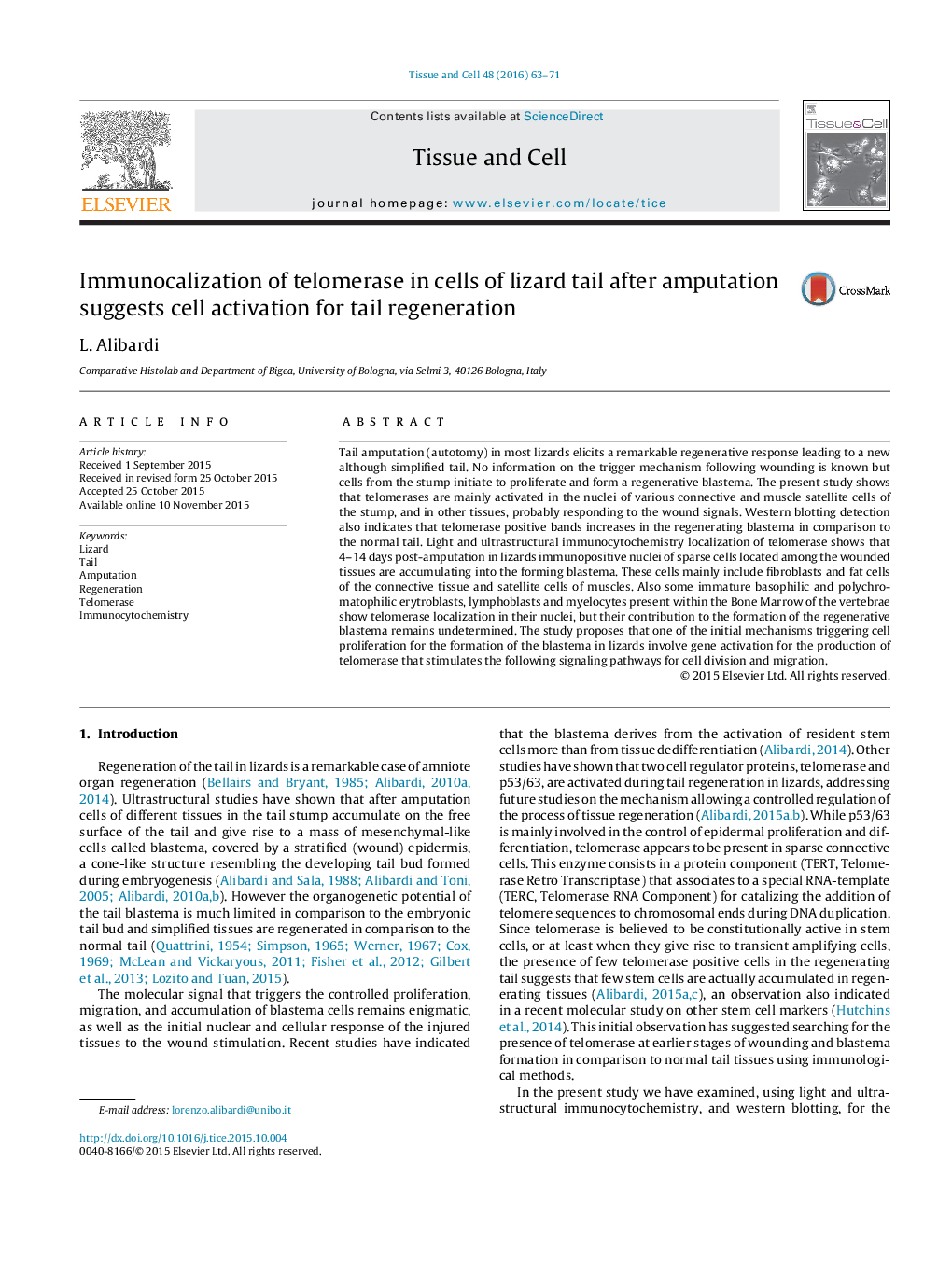| Article ID | Journal | Published Year | Pages | File Type |
|---|---|---|---|---|
| 2203541 | Tissue and Cell | 2016 | 9 Pages |
•Immunolocalization of telomerase in amputated and early regenerating lizard tail.•Activated cells expressing telomerase are seen in the tail stump.•Telomerase is present in early blastema cells.•Western blot confirms telomerase up-regulation during regeneration.•Telomerase activation may be a trigger mechanism for tail regeneration.
Tail amputation (autotomy) in most lizards elicits a remarkable regenerative response leading to a new although simplified tail. No information on the trigger mechanism following wounding is known but cells from the stump initiate to proliferate and form a regenerative blastema. The present study shows that telomerases are mainly activated in the nuclei of various connective and muscle satellite cells of the stump, and in other tissues, probably responding to the wound signals. Western blotting detection also indicates that telomerase positive bands increases in the regenerating blastema in comparison to the normal tail. Light and ultrastructural immunocytochemistry localization of telomerase shows that 4–14 days post-amputation in lizards immunopositive nuclei of sparse cells located among the wounded tissues are accumulating into the forming blastema. These cells mainly include fibroblasts and fat cells of the connective tissue and satellite cells of muscles. Also some immature basophilic and polychromatophilic erytroblasts, lymphoblasts and myelocytes present within the Bone Marrow of the vertebrae show telomerase localization in their nuclei, but their contribution to the formation of the regenerative blastema remains undetermined. The study proposes that one of the initial mechanisms triggering cell proliferation for the formation of the blastema in lizards involve gene activation for the production of telomerase that stimulates the following signaling pathways for cell division and migration.
